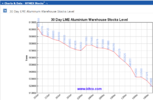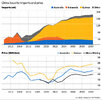- Joined
- 14 February 2005
- Posts
- 15,537
- Reactions
- 18,266
In brief:it's actually scary as there is one thing you can not do with smelters is shutting power..and end up with a jack hamer trying to cut thru a big blob of solidified metal..
Did we not experience that in SA.
31 January 2020 a major incident occurred involving structural collapse of 6 transmission towers in Victoria, carrying 2 x 500kV transmission lines. A seventh tower was also severely damaged.
That incident involved the towers physically crashing to the ground in real time, a completely unintended and unexpected occurrence, and disconnected western Victoria (including the Portland aluminium smelter) from the rest of the grid.
A solution making use of physically still intact assets was very hastily devised and actioned with supply restoration to the smelter underway 2 hours and 40 minutes after the incident. In short this involved isolation of the damaged lines and connecting western Victoria including the smelter to SA.
Another hour or so and it would all have been over since 3.5 - 4 hours is when the cryolite, which melts at just over 1000 degrees C, starts to freeze. Cryolite being a molten material that overlays the aluminium in the smelter pots with the great problem being that once it sets, once it's solid which it is below about 1000 degrees, then it ceases to conduct electricity. Or in simpler terms once it's set there's no way to put heat into the pots to re-melt it = game over.
The improvised solution remained in place, and the smelter operated at full production, whilst towers were installed and lines returned to operation in Victoria.
The same smelter was however far less lucky in 2016 when a major power failure did indeed lead to not all but a lot of the pots solidifying. I don't know what the total cost of the repair was but government chipped in $240 million and that certainly wasn't the full cost.
Any aluminium smelter anywhere in the world uses the same basic process. Take the power out and they're all in the same situation - once the cryolite sets it's very serious time and $ to get going again. To the point that demolition and rebuilding can actually be the cheapest option.






